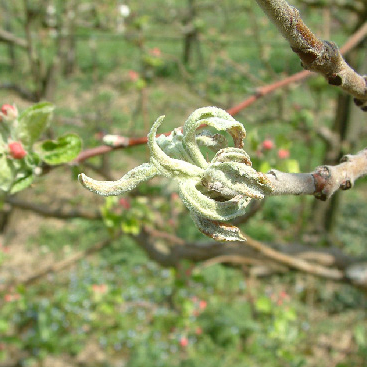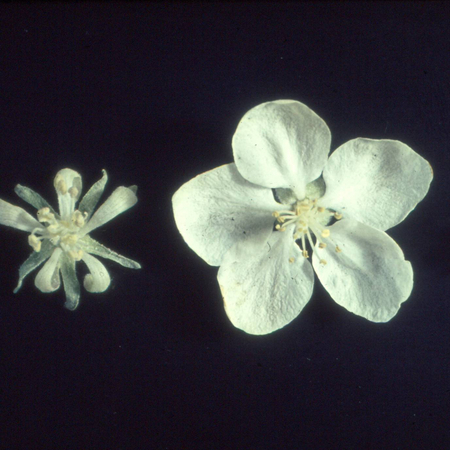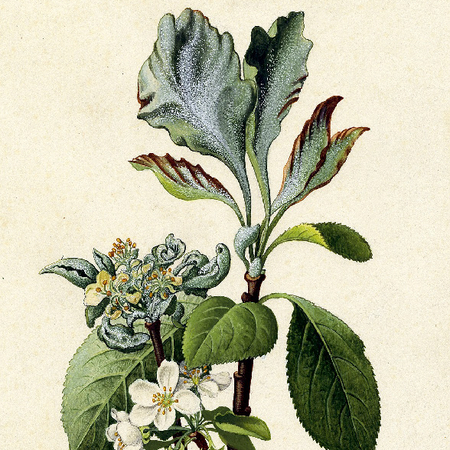Powdery mildew of apple
Podosphaera leucotricha
Biology
The pathogen overwinters in the buds, especially in the terminal buds. With budbreak in spring, the fungus grows out of the buds and attacks newly formed leaves, shoots and flower organs. It attaches itself to the surface and forms short sucking processes for nutrient uptake, which reach into the tissue interior of the host plant. After only a short time, powdery mildew coating of spores is visible at the infested sites. They serve for further spreading within the tree crown. From May to June, colonization of the new buds, the winter quarters of the fungus, takes place.
Damage symptoms
Young leaves, shoot tips and flowers are covered with a powdery white fungal coating. Affected flowers do not open at all or open a few days later than healthy flowers. The leaves are either completely covered with fungal mycelium or only individual spots appear on the undersides of the leaves. Subsequently, the leaves dry out and fall off. In the advanced stage, the shoots can become completely bare except for a small leaf head. Severe infestation leads to reticulated russeting on the fruit. Apples can remain small due to the powdery mildew infestation.



Prevention and control
- Too lush shoot growth should be avoided.
- The choice of cultivar is a major factor in determining disease incidence. In commercial cultivation, resistant varieties only need to be treated in the event of extremely high infestation; in the case of varieties with low susceptibility, the number of treatments with plant protection products can be reduced. Particularly susceptible varieties include Jonathan, Idared, McIntosh, Gravensteiner, Clear Apple, Cox's Orange, Elstar, Jonagold, and Boskoop.
- Infected shoots should be removed during winter pruning.
- However, removal of infected shoots (powdery mildew pruning) is also an effective measure to reduce infestation in spring/early summer.
- The use of plant protection products (see list of plant protection products approved in Austria) starts at flowering and continues until the end of shoot growth.
Last updated: 11.04.2023
automatically translated